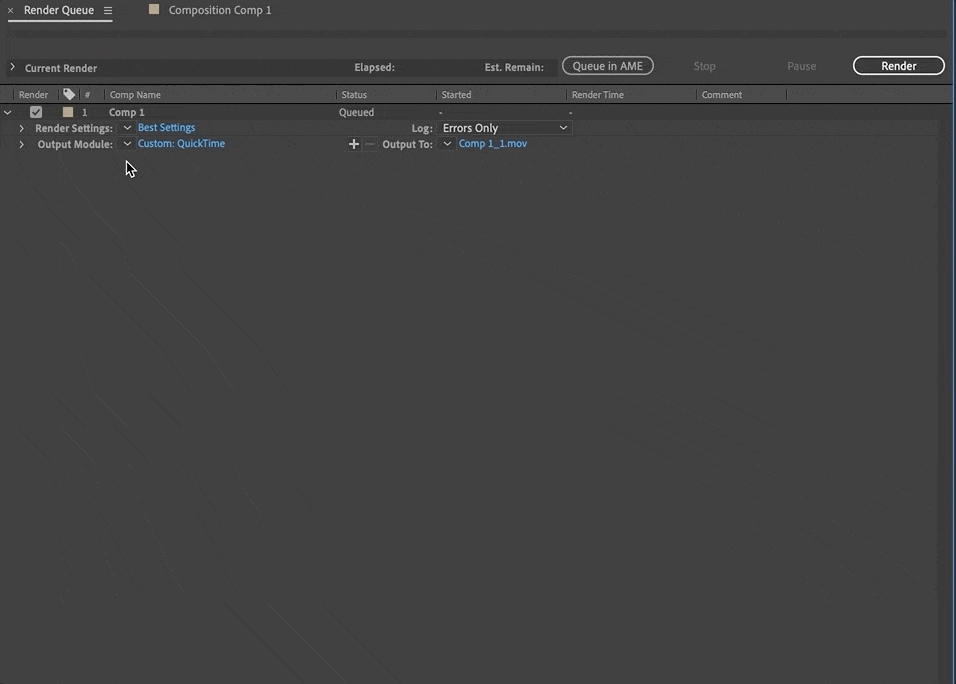After Effects White Background
- After Effects Background Templates
- After Effects Key White Background
- Removing White Background In After Effects
- After Effects Keylight White Background
This are two ways you can put background color behind text in Adobe After Effects. Practice along with the video tutorial to create your background colors.
After Effects Backgrounds. Looking for the best After Effects Backgrounds? We've got 54+ great wallpaper images hand-picked by our users. Feel free to send us your own wallpaper and we will consider adding it to appropriate category. Download, share and comment wallpapers you like. Does anybody know how to cleanly remove the white background from the image? I tried to rotoscope it out, and the roto dissapears after every 10 frames. I also tried to use a pen tool to trace around, but it wasn't very clean. Any help would be very much appreciated. Adjust the Screen Matte settings Clip Black and Clip White until the background is completely black and the subject is completely white. You can also adjust settings such as Screen Shrink/Grow or Screen Softness, if needed. Now, change the View setting back to Intermediate Result. Duplicate the logo layer and use the channel combiner effect on the duplicate to make that color channel luminance only. Add a levels adjustment to make dark areas black and the light areas white (white will be opaque, black transparent in the next step). Set the original logo layer to use the duplicate as a track matte. If you get a white fringe, precomp those two layers and then add remove color mattting, with the color set to white.
Introduction to Background in After Effects Adobe After Affect initially developed by the members of the company of Science and Art Effect and later it was hired by Adobe systems. After Effect as its name shows is used in different types of editing of photography work, cinematography work, etc.
The first way is:

- create a text layer
- write your text, I copied and pasted my favorite poem: “The Raven by Edgar Allan Poe”
- duplicate the text layer.
- change the name of the duplicated layer to something like “text background color” so it is not confusing. This will be the layer used for the background color.
- put the duplicated layer “text background color” underneath the original text layer.
- click on the “text background color” layer and go to Character tab for the fonts and choose the color of the stroke that you want to be for the background.
- change the stroke width to something like 35 to 38 that will give a good amount of background for the text.
- change the opacity to something that you like or keep it as is.
- now you have background color behind text 🙂
Follow along with the video tutorial so you can try it out.
The second way is:
- make sure you have not selected any layers.
- click the pen tool tab on the top of the menu.
- click around the text any way you want using the pen tool. this creates a shape layer. (make sure you finish the shape layer by clicking the first box as your last click to complete the Shape.)
- move the text layer above the shape layer that you created and now you have created background color for your text 🙂
About the First Way
The First way add a background color behind the text layer and the background color is in the shape of the text. So you can create any text in any font you want and the background color will keep the shape of the font you have chosen for the text. The first way is very popular and many people do this when they want to put like table of contents in their video. With the first way they can write their table of contents and have a background color in the font form behind the text. This looks professional and it is very simple and easy to do.
About the Second Way
The Second way you are creating the shape of the background color so you can shape whatever shape you want. After shaping it you can choose the background color you like. And, then you can place the text in front of the shape and this way you have a background color behind text in the shape you have chosen. For example you may have a text that says what ever you have written, but now you want a square shape background color. So, with the Second way you are able to create the style of shape you want to be behind your text as a background color.
Please comment below if your know any more ways to put background color behind text.
Thumbs Up! like and subscribe 🙂 Thanks You for Your Time!
In this exercise, you'll learn how to do the following:
After Effects Background Templates
- Create a garbage mask.
- Use the Color Difference Key effect to key an image.
- Check an image's alpha channel for errors in a key.
- Use the Spill Suppressor effect to remove unwanted light spill.
- Key out a background by using the Keylight effect.
- Adjust the contrast of an image by using the Levels effect.

In this exercise, you'll build a promotional spot for a weekly news segment on a fictional television station. You'll begin by working with live-action footage of an actor captured on a greenscreen stage. You'll learn how to use keying effects to remove the green background and clean up the edge of the key to remove any lingering green spill. Then you'll add a title to the promo, and place a station ID into the composition to complete the project.
About Keying
Keying is defining transparency by a particular color value (with a color key or chroma key) or brightness value (with a luminance key) in an image. When you key out a value, all pixels that have similar colors or luminance values become transparent. Keying makes it easy to replace a background of a consistent color or brightness with another image, which is especially useful when working with objects that are too complex to mask easily. The technique of keying out a background of a consistent color is often called bluescreening or greenscreening, although you don't have to use blue or green; you can use any solid color for a background.
After Effects Key White Background
Difference keying defines transparency with respect to a particular baseline background image. Instead of keying out a single-color screen, you can key out an arbitrary background.
Why might you use keying? There are a variety of reasons, including the following:
Removing White Background In After Effects
- A stunt may be too dangerous for an actor to perform on location.
- The location may be too hazardous for cast and crew to film live.
- In the case of science-fiction movies, the location may not exist at all.
- You might be working with a limited budget and cannot shoot any other way.
After Effects Keylight White Background
The best way to ensure a good key is to know what format works best. MiniDV is a popular format, and you'll use it in this exercise, but compression can cause MiniDV footage to have artifacts such as blocky regions or aliasing along the curves and diagonals of your subject. The greater the digital compression, the harder it is to pull a clean key. After Effects can help you solve these and other keying problems.
